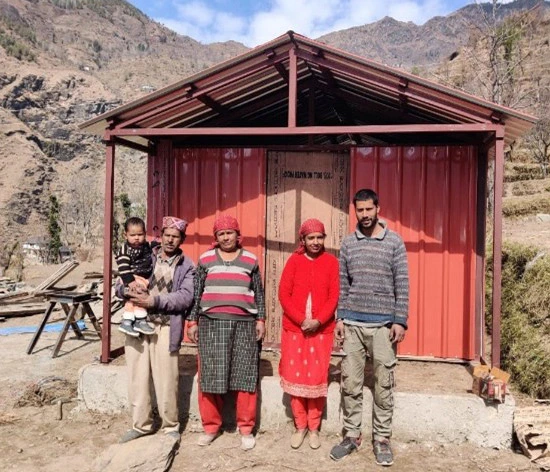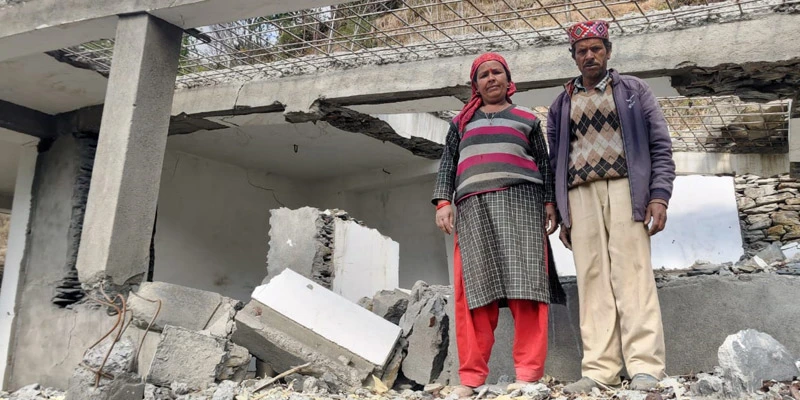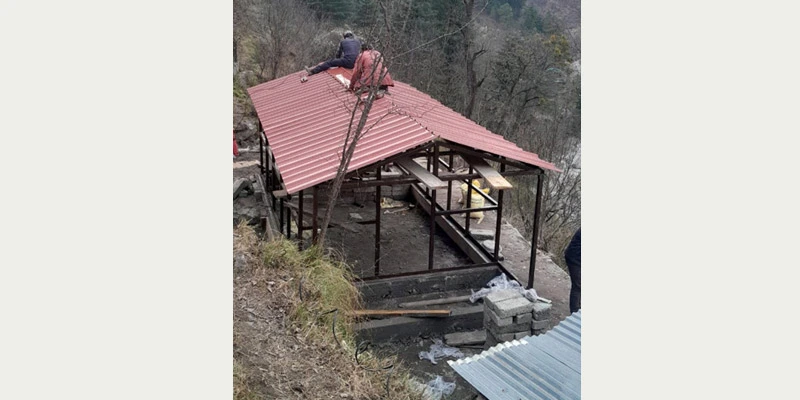
In July 2023, Himachal Pradesh was hit by a devastating cloudburst, causing floods and landslides that displaced thousands, leaving families without homes or livelihoods. While government relief provided immediate aid, Trusts focussed on bridging the critical period between emergency relief and the eventual rehabilitation. India's disaster response framework often has a critical gap between emergency relief and long-term rehabilitation, leaving affected communities vulnerable for extended periods.
Building for the gap between relief and recovery
To address this, Tata Trusts, in collaboration with People’s Science Institute (PSI), and Rural Technology and Development Centre (RTDC) initiated a project to design and deploy temporary, insulated and reusable shelters for families in Kullu and Mandi districts. An architecture firm was engaged by PSI designed these shelters which intended to serve as dignified, safe living spaces while permanent homes were rebuilt. The project aimed to develop models that could be rapidly deployed and reused, ultimately delivering 60 shelters to families in need.
The shelters were modelled like porta cabins and sized at 200 square feet, equipped with an attached bathroom and toilet. Designed for families of five to six members, they were insulated to remain 5°C warmer in winters and 5°C cooler in summers. These shelters are expected to last up to 10–12 years and can be reused five to six times assuming two-year usage cycles.
Living through loss
Khube Ram, a farmer from the village of Saraugi in Siraj Block, lost both his house and one bigha of farmland to the devastating floods in Himachal Pradesh. His five-member family, including his wife, two young children (one infant), and his disabled younger brother, initially took shelter with relatives. However, space constraints and the uncertainty of an extended stay forced the family to move into a makeshift shelter made from wooden poles and tarpaulin sheets near their damaged home.
Surviving the Himalayan winter in such conditions was a daily struggle. The temporary shelter provided little protection from the extreme cold, rain, and wind. With no insulation, the family relied on multiple layers of blankets and a small fire inside the shelter to keep warm, creating a fire hazard in an already fragile setup. The family also struggled with food security after losing part of their farmland. The situation was particularly difficult for the mother, who had to care for the infant amid these challenges.
A timely lifeline
In November 2023, Tata Trusts’ partner Rural Technology and Development Centre (RTDC), identified Khube Ram’s family as one of the most vulnerable and prioritised their case for shelter support.
Selection of beneficiaries was done in collaboration with local panchayats, using a transparent and objective metric that prioritised families who lost their homes and included vulnerable members like children, elderly, pregnant women, and persons with disabilities.
By February 2024, despite persistent winter rains, the shelter was completed and handed over. Designed specifically for the region’s climate, the structure provided immediate relief, allowing the family to move out of the makeshift setup and into a safe, weather-protected space.
The shelter model also included a design blueprint, serial-numbered components for easy assembly, and a usage handbook to ensure proper maintenance.
A new beginning
After eight months in the shelter, Khube Ram expressed deep gratitude for the intervention:"For my family, the shelter is very comfortable. In our cold region, it stays 5°C warmer inside during winter and 5°C cooler in summer. It provides much-needed relief from extreme weather. Now, my wife and I can focus on rebuilding our farm and earning a living without worrying about the safety of our children...This shelter has given us a stable place to restart our lives."
To ensure long-term preparedness, Tata Trusts signed an agreement with the State Disaster Management Authority (SDMA) to take over and store the shelters after two years, enhancing the state’s capacity to respond swiftly to future disasters.



